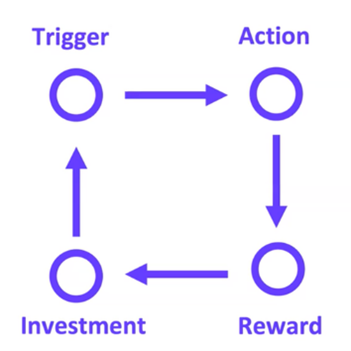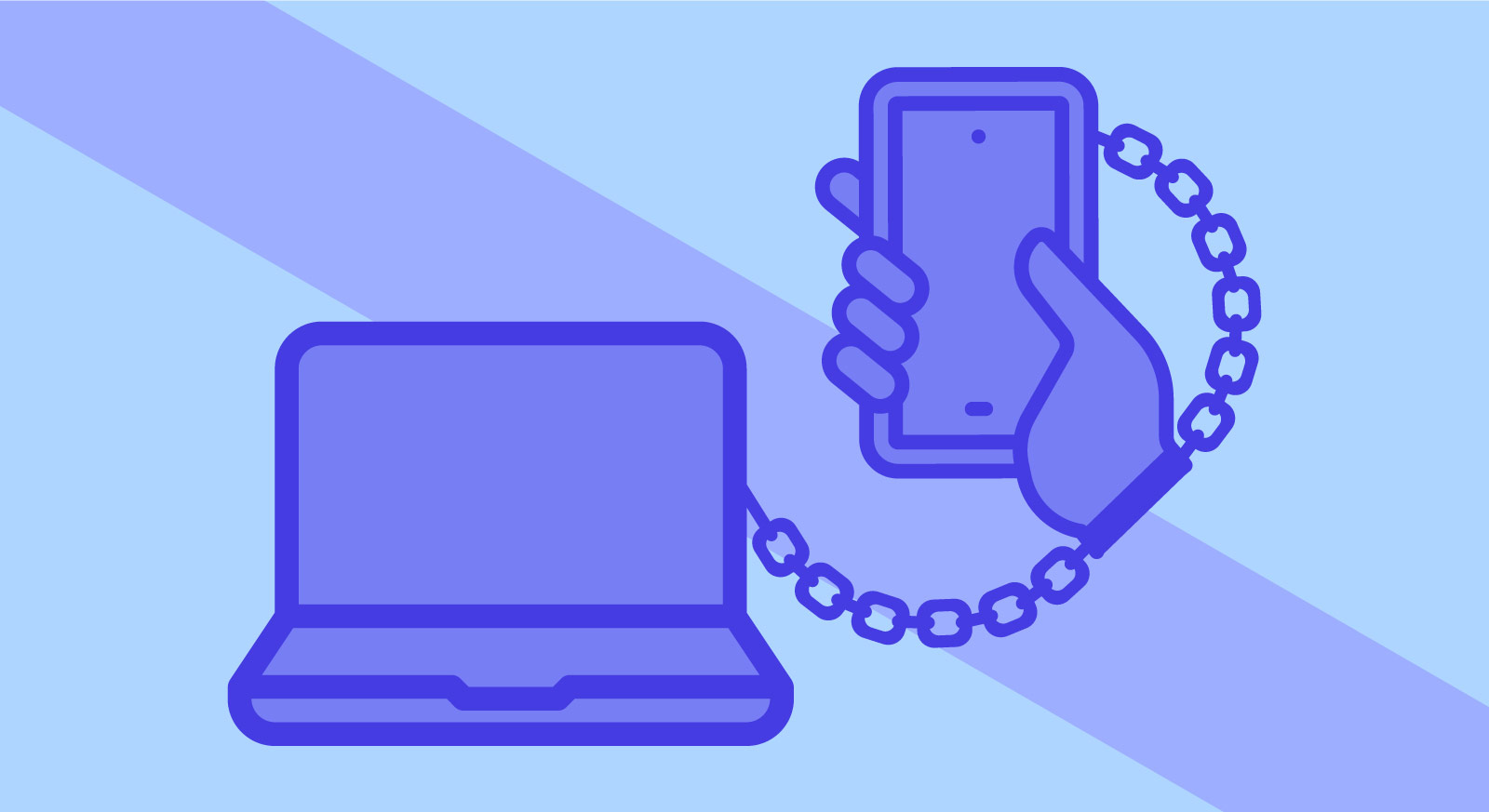You know the story all too well. You’re pushing hard toward a goal. It might be small – like writing this blog – or a big goal, like finishing your PhD, or somewhere in between. However, things get in the way; you’re distracted and don’t get it over the line.
Let’s look at one of the things that might distract you: reaching out for your phone or checking social media. Tech addiction isn’t about a lack of willpower or a character flaw on our part. On the contrary, it’s by design: tech companies use human psychology to design tech that is habitual and addictive. We need to learn how our brains work to reclaim power over our attention. For those of us who design tech, this blog lays the foundations to discuss how we tread the line between desirable vs addictive tech.
It all starts with an understanding of human psychology
As human beings, we need to quickly move away from what feels uncomfortable and move towards what feels good, so that we can quell the discomfort.
Our behaviours are influenced by our emotions, which are shaped by our childhood experiences. Whether an adult or a child, fear feels like fear and anxiety feels like anxiety. The intensity of our emotions points to the experiences of our ancestors (think hunter-gatherers) whose decisions could have meant life or death.
Anxiety, sadness, and fear trigger us to do anything to move us away from negative emotions and towards more positive ones like pleasure, joy, or excitement. This urge to move away from the negative is powerful and imperative.
Tech companies use psychology to influence how we respond to our emotions. For example, Sean Parker, Facebook's ex-president, explained how Facebook exploits our fundamental need to belong: “It’s a social-validation feedback loop... you’re exploiting a vulnerability in human psychology”.
Time to reflect: What are the platforms that you use regularly?
Tech companies purposely use psychology to design tech to be addictive
Tech companies need to interrupt their customers and make them come to their platform as often and for as long as possible so that they can maximise their revenues.

- External triggers are everywhere: email pings, unread messages, pop-ups. Fewer than 15% of smartphone users adjust their notification settings (Adam Marchick, Kahuna) so most of us let companies interrupt us whenever they want. The issue is that it takes office workers an average of 64 seconds after checking emails to get back to work (International journal of Information Management). Try calculating how many messages you received yesterday!
- Our thoughts, emotions, and sensations act as internal triggers. They create an internal discomfort that prompts us to take action to move away from negative sensations such as boredom, frustration, confusion, or fear.
Time to reflect: Next time you reach for your phone, note the trigger - a ping or an emotion?
For a behaviour to happen, we need the motivation, ability, and a trigger. (Fogg Behaviour Model)
Companies go to great lengths to motivate us through advertising, promotions, and various opportunities. Further, the focus on usability makes it as easy as possible for users to complete their goals, thereby increasing the likelihood of the action taking place.
Any technology or product that significantly reduces the steps to complete a task will enjoy high adoption rates by the people it assists.” (Denis J. Hauptly)
The action generates a reward. ‘Fixed rewards’, such as loyalty points, are known and predictable. ‘Variable rewards’ are unpredictable: the user doesn’t know if and how they will be rewarded. (BF Skinner experiment)
We become motivated not just by the reward itself but by the anticipation of the reward. Variable rewards can increase dopamine, encouraging the person to pursue more.
Variable rewards are at the heart of techniques that make tech habitual. Email might bring good, bad, or no news. The infinite social media scroll might present something interesting. M&S might draw your free shop in the giveaway. Social media companies have been said to withhold ‘likes’ on photos and release them in batches to make you feel disappointed and then excited.
‘Investment’ increases the chance of users coming back. These techniques appeal to the fact that we’re more attached to what we’ve invested effort or money in. For example, LinkedIn encourages users to complete their profile. Fortnite and Roblox players create elaborate skins. Twitter users invest in their followers. You’ve already spent so much time watching a TV series, you might as well finish it!
We can reclaim our attention
As tech users, we need to control how we let tech interrupt us, so that we reclaim our attention and reach the goals that are important to us.
As we move through different life domains (e.g. family, work, social), we should safeguard the time allocated for them by doing the activities we set out to do. Work time should be for work, family time should be spent with family, and social time should mean socialising.
What do you want to focus on?
“You can’t call something a distraction unless you know what it’s distracting you from.”
For example, if your child is talking to you while you’re working, is it because family life is distracting you from your work time or because you’re working during family time?
Is the trigger serving you or are you serving it?
Time to reflect: Earlier you inventoried your distraction triggers, can you classify them?
Nir Eyal, in his book “Indistractable”, offers a useful way of categorising apps on your phone.
- Primary tools that help you do important tasks e.g., get a ride, find location, take notes
- Aspiration tools that you choose e.g., reading, podcasts, meditation
- Slot machines that you get lost in e.g., social media, entertainment
Each of these categories requires different techniques to manage.
You can pause notifications – completely or at times, set maximum time you spend on an app or batch up your email replies. You can also close or sign out of the platforms that you don’t need for your current task. For example, practice being more present in meetings by closing your email and direct messages, and leaving your phone in another room.
What does it mean if you design tech?
For those of us who create digital services and products, this understanding of how tech might become habitual raises ethical questions. We want users to find our products useful, easy-to-use and enjoyable, so where is the line that crosses over to habitual or addictive tech? Are we serving users or are they serving us?
As designers of tech, we need to critically evaluate how our organisation’s goals align with user needs, so that we can create desirable tech and avoid it becoming addictive.
References:
- Eyal Nir (2014), ‘Hooked: How to build habit forming products’, Portfolio Penguin
- Eyal Nir (2020), ‘Indistractable’, Bloomsbury Publishing
- Nodder Chris (2013), ‘Evil by Design’, Wiley
- Oliver Joe, Bennett Ben (2016), ‘The mindfulness and acceptance workbook for self-esteem’, New Harbinger
- Harris Russ (2008), ‘The Happiness Trap: Stop Struggling, Start Living’, Robinson Publishing
- theguardian.com/technology/2017/nov/09/facebook-sean-parker-vulnerability-brain-psychology
- sitn.hms.harvard.edu/flash/2018/dopamine-smartphones-battle-time/


